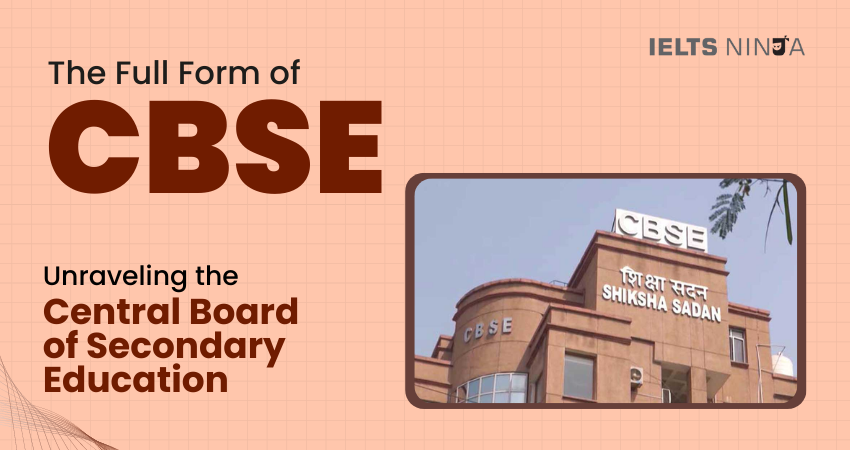In the landscape of education, acronyms often stand as the foundation of educational boards and systems that mold the academic journey of students. One such acronym that holds paramount significance in the Indian educational panorama is “CBSE”. CBSE stands for “Central Board of Secondary Education”. Hence, in this article, we will delve into the full form of CBSE, comprehend its structure, curriculum, and its pivotal role in shaping students’ education and overall development.
What Does CBSE Stand For?
CBSE stands for “Central Board of Secondary Education”. It is a national-level board of education in India that operates under the Ministry of Education, Government of India. The CBSE is responsible for setting academic standards, conducting examinations, and formulating curricula for various schools across the country.
Understanding CBSE:
The CBSE is one of the most prominent and widely recognized educational boards in India. It caters to both public and private schools and follows a uniform curriculum that is designed to foster holistic development and a strong foundation of knowledge among students.
Key Features of CBSE
Comprehensive Curriculum:
CBSE offers a curriculum that covers a wide array of subjects, including languages, sciences, mathematics, social sciences, and vocational courses. This comprehensive approach aims to provide students with a well-rounded education.
Emphasis on Application:
CBSE focuses on practical application and skill development. The curriculum is designed to enhance critical thinking, problem-solving abilities, and real-world application of knowledge.
Regular Updates:
The CBSE curriculum undergoes regular updates to align with changing educational trends and to equip students with contemporary skills and knowledge.
Evaluation Methods:
CBSE employs a combination of internal assessments and external examinations to evaluate students’ progress. The internal assessments can include practicals, projects, and coursework.
Standardized Examinations:
CBSE conducts standardized examinations, including the All India Senior School Certificate Examination (AISSCE) for Class 12 and the All India Secondary School Examination (AISSE) for Class 10.
Also Read: Best online IELTS coaching & training academy
Benefits of CBSE Education
Structured Curriculum:
CBSE’s structured curriculum provides students with a well-defined path of study, ensuring a balanced and comprehensive education.
Strong Foundation:
CBSE’s emphasis on core subjects like mathematics, science, and languages builds a strong foundation for higher education and career prospects.
Application-Oriented Learning:
The focus on practical application enhances students’ problem-solving skills and prepares them for real-world challenges.
National Recognition:
CBSE is recognized across the country, making it easier for students to transition between schools and states.
Competitive Examinations:
CBSE prepares students for competitive examinations like medical and engineering entrance tests by emphasizing conceptual clarity.
CBSE vs. Other Boards
Compared to other boards like ICSE (Indian Certificate of Secondary Education), CBSE’s curriculum is generally considered more concise. While ICSE offers a broader range of subjects and focuses on application-based learning, CBSE provides a balanced and standardized curriculum.
Conclusion
In conclusion, the Central Board of Secondary Education (CBSE) stands as a pillar of education in India, nurturing holistic development and academic excellence. With its well-structured curriculum, emphasis on practical application, and standardized examinations, CBSE prepares students for higher education and equips them with life skills. As you encounter the abbreviation “CBSE” in discussions about Indian education, remember that it signifies a nationally recognized educational framework that shapes students into well-rounded individuals ready to contribute meaningfully to society and their chosen fields.








